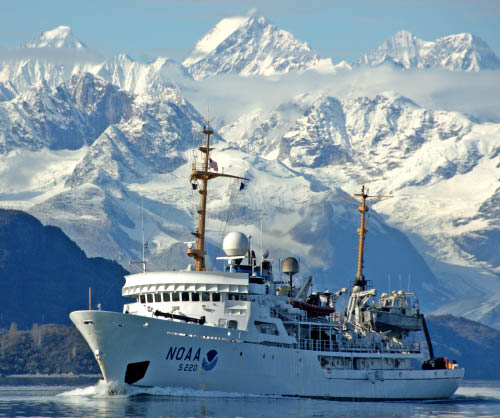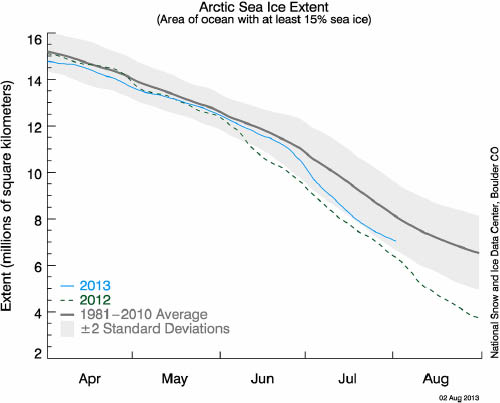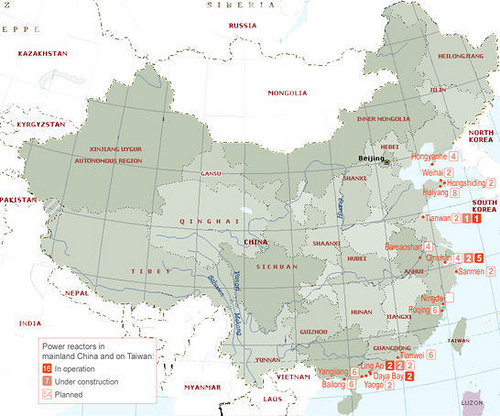Not just century, warming moral issue of millennium


Millennium Dollar Question: Today’s children’s children’s children will mostly have the same question—how could parents in the developed world think that their too-numerous offspring would forgive their complicity to do next to nothing while actively wrecking the atmosphere with their addiction to fossil-fuel and devotion to the almighty dollar.
More mud, fewer oysters, and galloping foreshore erosion. This is the forlorn future faced by the Mahurangi Harbour.
Just how muddy, how few oysters or fish, and how quickly higher and higher tides carve into soft unprotected shorelines depends largely upon how long the world’s democracies and media remain captive to vested interests.
When future historians scour archived mainstream media for clues as to why humanity remained determinedly fossil-fueled, long after anthropogenic global warming was known to be an existential threat, they will be hard-pressed to explain why the issue barely gets a mention, in the early decades. The New Zealand Herald’s online section labelled Climate Change often remains unchanged for weeks at a time. Last week it had stopped working altogether, but yesterday the drought broke including with two pieces on the release of a assessment by the office of the chief science advisor, short-titled New Zealand’s Changing Climate and Oceans.
Imagine for a moment that Aotearoa’s and other governments acted on the papers produced by their science advisors, and that global climate action was suddenly undertaken to radically reduce greenhouse gas emissions. For example, that this summer’s heat waves were to kill an unprecedented number of people in an influential and generally rational European state such as Germany, and that a global climate emergency was declared. That all non-emergency commuting and travel was curtailed, that places of work were, where possible, decentralised so that the vast majority of workers walked or cycled to their workspaces. That the summer working day was arranged to allow folk to work in the cooler parts of the day, to minimise the manufacture and operation of air conditioning machinery.
Imagine also that this crash programme to reduce greenhouse gas emissions was sufficient to turn around the most rapidly warming region, the Arctic, and that its terrestrial and submarine permafrost stayed that way, and that the large-scale release of methane was miraculously averted.
In such hopeful circumstances, greenhouse gas levels may, in time, stabilise. But the climate would continue to get hotter. The global thermostat might not be set higher, but the longer it stays at its new 400-parts-per-million setting, the warmer the global ‘room’ will become, until a heat-escape equilibrium is achieved. Without diabolically risky global climate engineering, the thermostat will stay, stuck, stubbornly high for a millennium. Past reductions in atmospheric carbon dioxide have taken place over several hundreds of thousands of years. Some of the carbon dioxide will be removed earlier, through absorption by the oceans. But sadly this process has already rendered the seas 30% more acidic, and that is likely to be a species-extinguishing 150% more by the end of the century, more acidic than its been in 20 million years. Carbon dioxide and ocean acidification is combining to cripple the Pacific Northwest’s oyster industry, with oyster larvae locked in a ‘death race’ to form shell.

Leaving Fair Weather: Research vessel Fairweather steaming past her mountain namesake. On Monday she set sail on a month-long research voyage off the Pacific Northwest, studying anthropogenic acidification and its effects. On a similar voyage in 2007, the Fairweather supplied ‘jaw-dropping’ data on acidification, which along with elevated levels of carbon dioxide, lock oyster larvae into a ‘death race’ to form shell. image National Oceanic and Atmospheric Administration
The combination of overfishing, ocean warming and ocean acidification is proving to be disastrous to fish populations. Because while similar changes to ocean temperature and acidity have occurred in the past, they did so over timescales sufficiently vast that many species were able to adapt and keep pace. But, as explained to Kathryn Ryan by Professor Daniel Pauly:
The time for adaptation is much too short. When you see species adapting in the course of a glaciation period, for example, there is always thousands of years from one phase to the other, or tens of thousands or hundreds of thousands of years. We are talking here of decades, so Darwinian selection, Darwinian adaptation through natural selection, will not work because [the warming] is too fast … [the speed at which oceans are warming] doesn’t resemble anything that has happened in the past; the rapidity with which this change [is] happen[ing].
Regionally, the picture is particularly graphic. Professor Pauly speaking about the Antarctic:
The collapse of the ice implies the collapse of the krill, will propagate into a collapse of the whole ecosystem there because everything is built around the krill. Everything is structured around the krill, because krill, the shrimp-like animals about two centimetres, they need ice to be there because they have the larvae [that] live under the ice, and if the ice is not there … if it goes, then krill goes, if krill goes, no more whales, no more penguins, no more everything.
Although much of the credit for the lack of climate action must be sheeted home to the fossil-fuel oligarchy, there is an important area where the fault lies not with vested interests but squarely with the public and nongovernmental organisations. This concerns a fuel found freely in the world’s oceans that is not just low-carbon, but zero carbon. It exists in such abundance, not just in the oceans, that it could quickly replace all greenhouse-gas-emitting fuels in short order. Unlike solar and wind, the power is available night and day, day after day. Unlike hydroelectricity, it doesn’t require enormous structures and the drowning of productive land. But it does have a perception problem, on account of the industry’s historical links with the development of weapons of mass destruction. The fuel is, of course, that naturally occurring element, uranium. The oceans hold about 4.5 billion tons of it, enough fuel to power current nuclear plants for 6500 years. But if a six-millennia timescale sounds shortsighted, the upcoming fourth-generation nuclear plants are 99 times more efficient than the current technology, and would first be fed with the used fuel rods currently being assiduously stored in anticipation. Which is why what was once called nuclear waste is now mandated to be recoverable for the first 50 years after it is stored.

No More Everything: Although a little less drastic than last year’s record reduction in extent, the Arctic is on track to becoming sea-ice free‘all polar bears ultimately will disappear.’ Antarctica is next, which will be catastrophic for larval stage of krill that rely of the underside of sea ice for habitat. In the words of Professor Daniel Pauly: ‘…if it goes, then krill goes, if krill goes, no more whales, no more penguins, no more everything.’ image National Snow and Ice Data Center
When the future historians attempt to explain the continued use of coal and gas to power air conditioners and public transport, it will take them chapters to account for the prevarication by Greenpeace and the Green parties, and the part they played in purveying anti-nuclear-power propaganda.
Part of the explanation for how fearful the public has been of nuclear power is ignorance of how entirely natural low levels of radiation are. Aside from uranium’s concentration in seawater of 3 parts per million, its concentration in soil ranges from 0.7 parts per million, to 15 parts per million in farm soils on which phosphate fertilizers are used. Coal ash waste from coal-fired power stations such as Genesis Energy’s Huntly plant carries 100 times more radiation into the surrounding environment than does a nuclear power station producing the same amount of energy.
With many harmful substances, such as mercury, there is no known safe level of exposure. Mercury poisoning, as is well known, is also accumulative and found in increasing concentrations up the food chain, in commonly consumed species such as tuna. But because life on Earth has evolved with low levels of it, radiation has been found to not be in the same category. In Taiwan in the 1980s, 1700 apartments and other buildings were constructed using recycled steel accidentally contaminated with cobalt-60:
Approximately 10 000 people occupied these buildings and received an average radiation dose of 0.4 [sievert], unknowingly, during a 9–20 year period. They did not suffer a higher incidence of cancer mortality, as the [linear no-threshold] theory would predict. On the contrary, the incidence of cancer deaths in this population was greatly reduced—to about 3 per cent of the incidence of spontaneous cancer death in the general Taiwan public.
The linear no-threshold theory of radiation exposure, however, is deeply entrenched:

Most Things in Moderation: While some areas with high background radiation have been found to be distinctly unhealthy, it appears that there is a Goldilocks zone where health is improved. Cancer mortality in the population of the beautiful Brazilian city of Araxá, famous for the mildly radioactive Araxá Baths, is lower than found in the general population. image Tauá Grande Hotel
Scientific investigations on low-dose effects have been underway in recent times in many other countries. However, in most cases, the experiments are either not designed to detect beneficial health effects or, when such effects are observed, they are ignored.
Similarly, Greenpeace and the Green parties refuse to reconsider their dogmatic opposition to nuclear power in the light the existential threat posed by greenhouse gas emissions and the lack of alternatives beyond those that are incapable of displacing coal and gas, such as wind and solar. Thanks to its Green Party coercing centrist parties to commit to a phase-out of nuclear power, Germany’s greenhouse gas emissions rose in 2012, and the country now sports a new carbon-filthy lignite-burning power station. The Green Party of Aotearoa New Zealand would turn heads worldwide, had it the courage to (a.) face anthropogenic global warming, and comprehend that it is not just another environmental issue, but an existential one, and (b.) admit that third- and fourth-generation nuclear power, as advocated by Dr James Hansen, must be part of any realistic plan to rapidly and radically reduce greenhouse gas emissions. Aotearoa is widely respected for its anti-nuclear-armed warships policy. For this reason, for Aotearoa to put its money where its mouth is and replace the Huntly Power Station with nuclear forthwith would be a powerfully symbolic, and practical, act. It would force Green parties worldwide to examine and replace their anti-nuclear-power doctrines with policies that would seriously take some of the sting out of global warming.
Support for nuclear power doesn’t imply going soft on energy efficiency. But if public transport systems are to be electrified, including in the interests of energy efficiency, more generation will be needed. Further, for the very young and old, energy-hungry air conditioning will increasingly become a matter of life and death during heat waves of increasing severity.

Make That 17, 28 and 103? Fortunately for the developed world, and the natural world, China is building and planning to build nuclear power plants at such a pace that it is a challenge to report accurate numbers for stations built, under construction, or planned. image World Nuclear Association
The instinct of most friends of Planet Earth will be to chant the solar–wind mantra evermore determinedly. But with every day of delay, more carbon dioxide goes into the oceans and atmosphere where much of it will remain for a millennium—1000 years is a long time to be wrong. Meantime, China is surging ahead with her nuclear power programme, this year having broken ground on an at-scale fourth-generation power plant, following the successful testing of a prototype in 2010. The United States forwent its fourth-generation nuclear power lead twenty years earlier, when Vice President Al Gore persuaded his boss to ditch the technology as the price of the support of the environmental lobby. In doing so, America abdicated its natural role as green energy leader of the world and ceded all power to fossil-fuel interests.
Wind and solar can only provide a fraction of the world’s essential energy needs. The sooner New Zealanders shed their outdated anti-nuclear-power dogma, the better for the generations that will reap what present generations are sowing.
And better will be the prospects of protecting the voluptuous but erodible landscape of the Mahurangi, and its succulent oysters, and the harbour’s children’s children, from the worst ravages of global warming.
